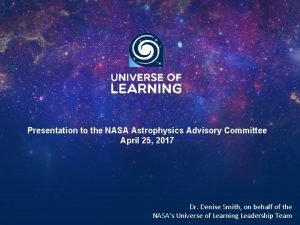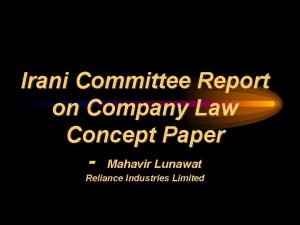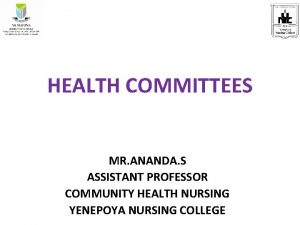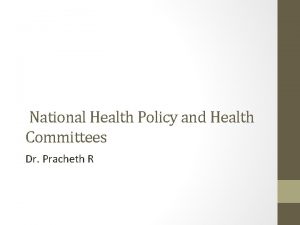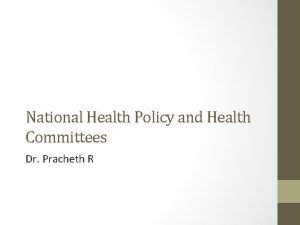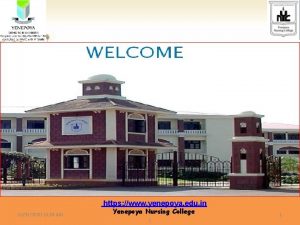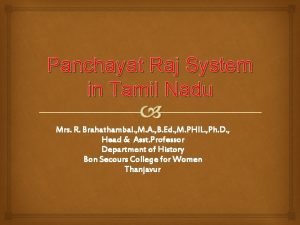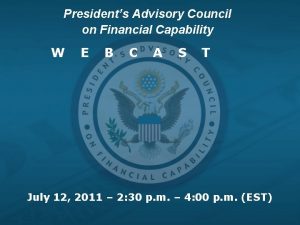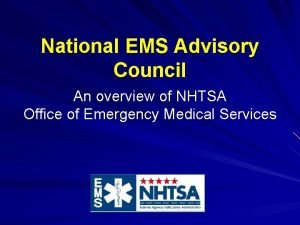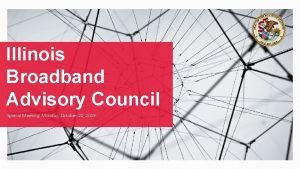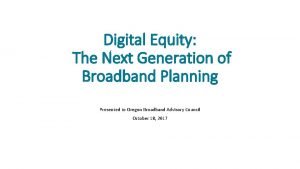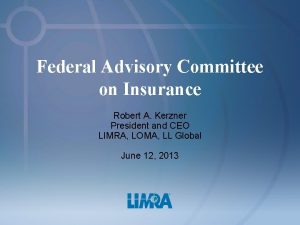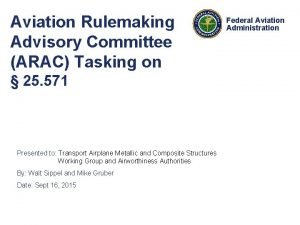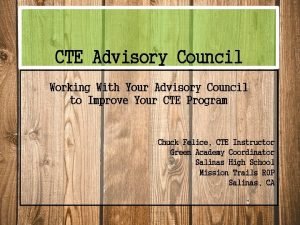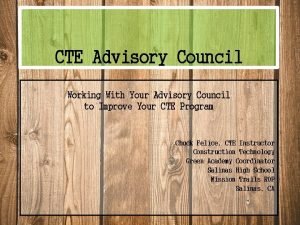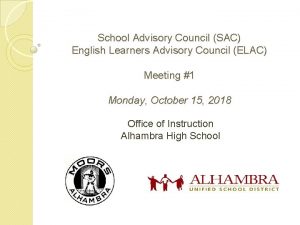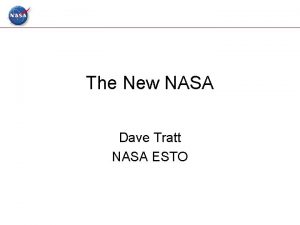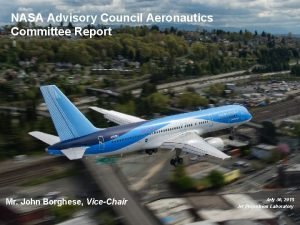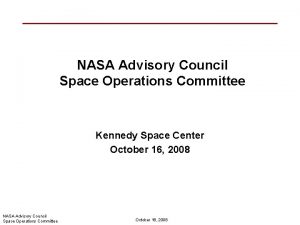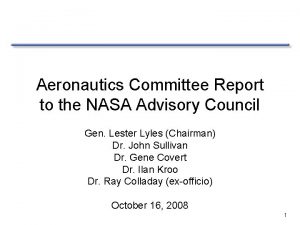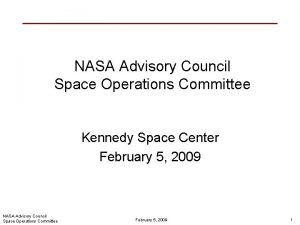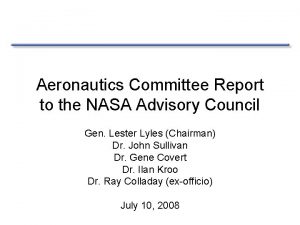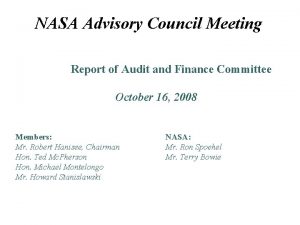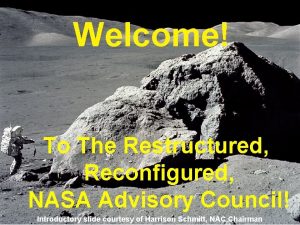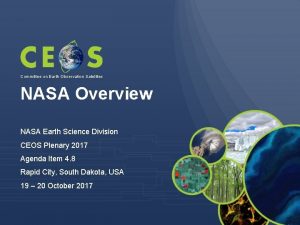NASA Advisory Council Committee Recommendations Human Capital Committee






















- Slides: 22

NASA Advisory Council Committee Recommendations Human Capital Committee • Joann Di. Gennaro, Kay James, • Gerald Kulcinski (chm), Jim Milgram, and Wendell Maddox Jet Propulsion Laboratory, May 18, 2006

Human Capital Committee Recommendation #1 NASA should be given more flexibility to deal with the problem of the current uncovered workforce while maintaining a vigorous recruiting program • Target the “best and brightest” college graduates, practicing scientists, and engineers to address near-term (<2010) problems. • Aggressively pursue the “best and brightest” K-16 students for NASA and NASA related industries to have a major effect on the post 2010 workforce.

Human Capital Committee Recommendation #1 (cont. ) NASA should be given more flexibility to deal with the problem of the current uncovered workforce while maintaining a vigorous recruiting program Major reasons for proposing this recommendation • There is a short term problem in hiring because of the uncovered employees in NASA Centers. • On the other hand, NASA demographics indicate that there will be a large fraction of employees eligible to retire in the near term. • In addition, new skills will be required to achieve the Vision for Space Exploration and there is a current shortage of U. S. graduates in key NASA disciplines.

Human Capital Committee Recommendation #1 (cont. ) NASA should be given more flexibility to deal with the problem of the current uncovered workforce while maintaining a vigorous recruiting program Consequences of no action on the recommendation • The U. S. will lose science and technology leadership and may not be able to complete critical space missions. This will have strategic implications for the U. S.

Human Capital Committee Recommendation #2 Enhance NASA’s efforts to attract highly qualified scientists and engineers for its space exploration programs • NASA should increase collaborations with other federal agencies, its industrial, and academic partners to align with federal programs, in particular, the President’s Competitiveness Initiative. This should help to address the necessary expansion of the pool of exceptional students in math, science, and engineering.

Human Capital Committee Recommendation #2 (cont. ) Enhance NASA’s efforts to attract highly qualified scientists and engineers for its space exploration programs Major reasons for proposing this recommendation • NASA is in danger of losing many talented graduates to other fields of science and engineering. On the other hand, NASA will need talented scientists and engineers from other federal agencies to complete its exploration mission. • The U. S. needs to continue its international leadership in innovation and avoid losing talent to other nations.

Human Capital Committee Recommendation #2 (cont. ) Enhance NASA’s efforts to attract highly qualified scientists and engineers for its space exploration programs Consequences of no action on the recommendation • NASA alone may not have the necessary resources nor the personnel to complete future complex human exploration missions. • NASA will not be an informed buyer. 1

Human Capital Committee Recommendation #3 Streamline procedures for hiring foreign nationals. • NASA’s Office of Human Capital Management should reexamine the present federal policy (E. O. 11935) for employment of foreign nationals.

Human Capital Committee Recommendation #3 (cont. ) Streamline procedures for hiring foreign nationals Major reasons for proposing this recommendation • Roughly half of advanced degree science and engineering graduates in the U. S. are awarded to foreign nationals. • At the present time, of ≈18, 000 NASA employees there are 8 non. U. S. employees. Currently the Space Act of 1958 allows NASA to hire up to 150 foreign nationals. • Recognizing that NASA does not dictate national immigration policy, it is nonetheless important to revisit the present policy of underutilization of non-U. S. scientists and engineers working at NASA Centers.

Human Capital Committee Recommendation #3 (cont. ) Streamline procedures for hiring foreign nationals Consequences of no action on the recommendation • The U. S. would not be taking advantage of at least half the current labor pool of science and engineering graduates. • There will be one less avenue for ameliorating current workforce shortages. 1

Human Capital Committee Recommendation #4 Consolidate education resources and programs • NASA should consolidate all of the educational outreach programs and resources under one directorate.

Human Capital Committee Recommendation #4 (cont. ) Consolidate education resources and programs Major reasons for proposing this recommendation Approximately half the education outreach budget (total ≈$300 M) is outside the NASA Office of Education. This type of organizational structure causes redundancy, duplication of effort, loss of efficiency, and lack of focus.

Human Capital Committee Recommendation #4 (cont. ) Consolidate education resources and programs Consequences of no action on the recommendation • There will be less efficient use of scarce resources within NASA.

Human Capital Committee Recommendation #5 Establish programs specifically targeted to the most academically talented math and science students • In an increasingly competitive world, there is a need to maximize the potential of all students, including the highest achievers, who have the potential to tackle the most difficult scientific and engineering problems facing NASA and the nation. -This cohort is very often ignored in the belief that they need no encouragement to pursue NASA-related careers.

Human Capital Committee Recommendation #5 Establish programs specifically targeted to the most academically talented math and science students (example of the complexity of this issue) • The decision to cut the Astrobiology program in FY 07 by 50% from its FY 05 level will directly affect NASA’s ability to attract top academic students and retain 100’s of top graduates in this area.

Human Capital Committee Recommendation #5 (cont. ) Establish programs specifically targeted to the most academically talented math and science students Major reasons for proposing this recommendation • There are currently no NASA K-12 programs specifically targeting the most academically talented students (upper 5% in math and science). • This nation needs to maximize the potential of top college graduates to insure our future competitiveness.

Human Capital Committee Recommendation #5 (cont. ) Establish programs specifically targeted to the most academically talented K-16 math and science students Consequences of no action on the recommendation • NASA, as well as other private and public sectors, will not have a sufficiently large pool of highly talented graduates to compete in the global science and technology arena.

Back-up

NASA Agency-wide Education Investment -- FY 06 President’s Budget Pre-Earmarks Alignment $295 M Higher Education Employ Elementary/ Secondary Education* 35% $102 M $135 M 46% Educate Engage Informal Education $58 M Inspire * Includes three projects previously aligned with MUREP 19%

FY 2006 NASA Education – Request vs. Initial Op. Plan $166. 9 $162. 4

NASA Agency-wide Education Investment -- FY 06 President’s Budget Pre-Earmarks Alignment $295 M Post-Earmarks Alignment $285 M Higher Education Employ Elementary/ Secondary Education* 35% $102 M 26% $75 M $135 M 46% $128 M 45% Educate Engage Inspire Informal Education $58 M $82 M * Includes three projects previously aligned with MUREP Includes earmarks assigned to Office of Education; reallocation of resources by ARMD, SOMD and ESMD 19% 29%

Education Portfolio Coordination Framework Assistant Administrator for Education Chair Data HQ Policy Education Coordinating Committee • Office of Education • Mission Directorates • Centers • Functional Offices Cross. Agency Office of Education Framework/ Principles Workforce Needs Performance Data Reporting Accountability ARMD, ESMD, SOMD, SMD • Strategic Goals/ Objectives/ Outcomes • Consultation • Coordination • Cognizance • Assessment Content • Performance Goals • Direction • Funding • Evaluation • Reporting Funding/ Program Reqs Implementation • Program/Project Center Education Offices Centers and External Partners Activities Programs/Projects Management and Execution • Performance Data • Evaluation • Reporting
 Nasa astrophysics advisory committee
Nasa astrophysics advisory committee Jj irani committee on corporate governance
Jj irani committee on corporate governance Jungalwalla committee recommendations
Jungalwalla committee recommendations Yashpal committee learning without burden
Yashpal committee learning without burden Bhore committee
Bhore committee Recommendations of kartar singh committee
Recommendations of kartar singh committee Chadah committee
Chadah committee Gvk rao samiti
Gvk rao samiti It-aac
It-aac Cadet advisory council
Cadet advisory council Source selection
Source selection President's advisory council on financial capability
President's advisory council on financial capability National ems advisory council
National ems advisory council Illinois broadband advisory council
Illinois broadband advisory council German advisory council on global change
German advisory council on global change Oregon broadband advisory council
Oregon broadband advisory council Trade union advisory committee
Trade union advisory committee Robert kerzner
Robert kerzner Aviation rulemaking advisory committee
Aviation rulemaking advisory committee Awit sa panitikan
Awit sa panitikan Calipso data download
Calipso data download What is gross working capital
What is gross working capital Difference between capital reserve and reserve capital
Difference between capital reserve and reserve capital
